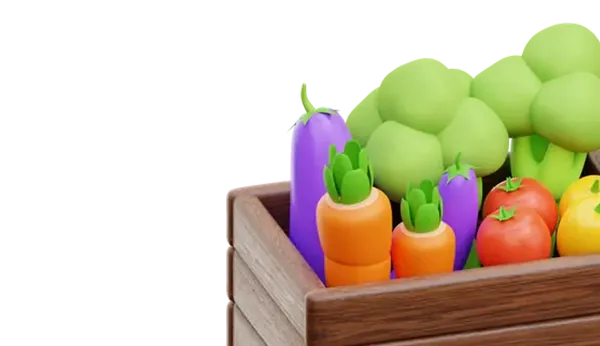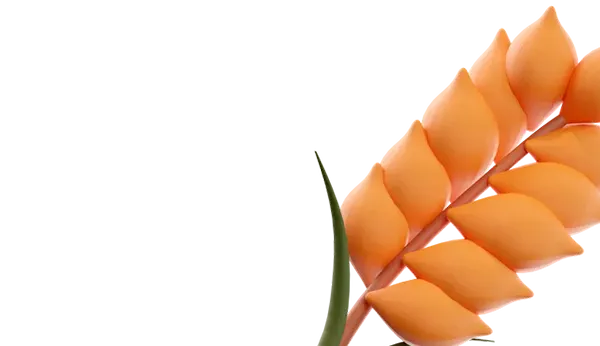Recently, the latest technologies and methods for increasing garden productivity were discussed, starting from sensors capable of "listening" to electrical impulses in trees, to fighting powdery mildew on apple trees and available pomology systems.
The HELIOS project, which has been ongoing for ten years since its launch in 2017, is conducting research aimed at redesigning the architecture and crown shape of trees to allow them to receive more light and significantly increase yield in a way that would be economically efficient. For this purpose, two orchards of declared Gala Galaxy apple varieties were planted on different rootstocks: one orchard was located in Gloucestershire and the other in Kent, using different planting systems.
One of the planting configurations tested within the HELIOS project was planting Gala apple trees on M116 rootstock with minimal support, using only a simple wire installed at planting, without the use of poles and wire structures. "After seven years of research within the HELIOS project, we can now call M116 the most effective system to date, as well as registering the highest return on investment ratio. In the case of heavy soil, you probably wouldn't choose M116, but in our Kent region, we can control plant growth and this rootstock has shown excellent results," shared Nigel Kitney, an agronomist at Hutchinsons.
In addition to collaborating with the HELIOS project, Hutchinsons is also involved in a number of other innovative research projects aimed at developing ways to increase control over common diseases such as powdery mildew and canker, as well as developing resistance to them. One such project is Hutchinsons Improving Resilience In Scab Control (IRIS), where Gala apples are grown on a 1-hectare area using the minimal support system of M116.
The goal of the IRIS trial is to increase the robustness of fungicide programs in combating powdery mildew under a reduced fungicide arsenal scenario. The project investigates whether biostimulants can help trees resist diseases and fill the gaps in the existing treatment program, promoting the development of systemic acquired resistance (SAR).
This season, 22 different treatment methods were conducted with varied results. Some showed significant reduction in powdery mildew infection; however, the use of phosphites needs to be balanced, as some yellowing of new growth was detected at the beginning of the season when the same phosphite product was applied multiple times," explained Kitney. It is important to note that this year, the RIMpro model also showed some inconsistency, overestimating the powdery mildew risk early in the season and lowering its assessment later in the year.
Currently, Hutchinsons, supported by Optisense and the University of Newcastle, is developing a new system for detecting pathogen spores in the orchard and comparing its results with RIMpro forecasts. A special device resembling a Dyson vacuum is used to "suck in" spores from the air and collect them on rotating rods. The DNA extracted from these samples is then analyzed using Loop-mediated isothermal amplification (LAMP) to identify the types of present spores. Currently, this process is carried out in the laboratory, but there are plans to fully automate the system in the future to perform all actions in field conditions and send the results to the producer for timely disease outbreak warnings.
This season, 40 devices are undergoing trials in apple orchards intended for fresh consumption and cider production in the West Midlands and Kent regions, with an additional 8 devices being tested in vineyards. "Currently, we are focusing on determining the correlation between sensors and the predictive RIMpro model, as well as identifying optimal placement locations within the orchard.
Although spore sample testing was possible in the past, it was extremely challenging. But this new DNA-based system could revolutionize this area. We are focusing on powdery mildew, but this system can detect any other ascospores in the air, including false powdery mildew," said Kitney.
Another project discussed during the day was the project aimed at reducing apple tree infections with apple canker (CRAFT), which is in its second year of trials. It explores the possibility of using various elicitor products, growth regulators, root fertilizers, and biological fungicides to enhance natural apple tree defenses against Neonectria ditissima fungus, a major cause of apple cankers.
The trials are conducted on a garden plot in the West Midlands region, near the HELIOS West project, chosen due to the high risk of apple canker occurrence. "Several products tested in this project are duplicates of products from the IRIS project, but there are also several new products. Three or four products have been particularly useful in enhancing apple tree resistance to canker, where we noticed a significant decrease in disease occurrence frequency after using these products, which is really interesting.
One product showed particularly promising results, reducing cankers from 4.8 to 0.3 new infections per 100 shoots, with a cost of only 30 pounds per hectare for plantations. Considering the reduced availability of plant protection products in the future, the availability of different options will be extremely valuable. Each individual option may not provide 100% control, but together they can work more efficiently," Kitney shared his conclusions.
There was also an interesting discussion led by Hutchinsons agronomist Andy Lloyd on the use of sprayers in orchards. He presented the results of an experiment that investigated the impact of spraying frequency on powdery mildew infection. The experiment showed that spraying every second row led to a doubling of infection, while spraying every third row increased disease incidence four to six times. Thus, the importance of ensuring maximum coverage during spraying was confirmed. As useful recommendations, Lloyd shared:
- Use recommended rates, water volumes, and nozzles for specific products.
- Monitor air pressure, as spray droplets, as research shows, bypass target surfaces at high pressure. Some cases of spray deposition may improve with reduced flow rate.
- Adjust air flow based on leaf coverage at certain times of the season.
- Check spraying with water-sensitive paper and/or natural food colorants.
- Install strips on a stick extending 30 cm above the top of the tree to mark the sprayed area (which helps observe how the airflow moves past the strip).

 Trading platform
Trading platform 
 Monitoring
Monitoring  Express applications
Express applications 
 Fork Work
Fork Work 
 Service
Service  News
News  Directory
Directory 













